CMN 269
Countercultural Communication

1. Course Description
This course examines the complex relationships between conventional and countercultural communication practices. Investigating countercultural forms, spaces, and acts such as graffiti, comix, memes, zines, culture jamming, body modification, viral videos, and others, the course considers how novel and often subversive communication practices influence and alter conventional forms. Countercultural communication can drive innovation; its original voices, forms, practices and idioms can be adapted and applied to bring new life and power to conventional contexts and forms.
Last Revised
Delivery
Lecture: 3 hours
2. Course Objectives & Learning Outcomes
- To analyze how and why subcultures develop alternative forms of communication
- To distinguish between dominant and subversive communication practices and recognize the social understandings and power relations that inform them
- To identify innovative and disruptive communication forms and practices and to modify and adapt them to achieve professional or dissident purposes
- To examine the process by which countercultural communication eventually becomes conventional practice
3. Topics Covered
- Communication theory
- Cultural studies theory: dominant and resistant cultures and ideology
- Discourse theory and repertoires
- Culture Jamming
- Digital forms, spaces, and identities
- Cool-hunting and commodification
- Creativity and communication
4. Teaching Method
Workshops and Lectures
This course will employ a combination of lectures, class discussion, and individual and group work to examine course materials. Students will be expected to contribute significantly to class discussions and exercises.
Graded Assignments
Students will complete at least three assignments. Additional in-class work may be assigned. The weight of each assignment will be announced by the instructor.
5. Course Materials
To ensure currency and relevance, course materials will consist of recent journal articles, web texts, videos, and other material that will be provided in electronic form on D2L Brightspace.
6. Policy
6.1 University Policies
Students are required to adhere to all applicable university policies found in their Online course shell in D2L and the Course Outline Policies.
6.2 Print and Digital Copying Guidelines:
Toronto Metropolitan University complies with Canada’s Copyright Act which protects both creators/owners and users of copyrighted materials. Students should familiarize themselves with TMU Copyright policies and procedures, and contact the Copyright and Scholarly Engagement Librarian at copyrt@ryerson.ca for questions, concerns and clarification of the copyright rules.
6.3 Turnitin.com
Turnitin.com is a plagiarism prevention and detection service to which Toronto Metropolitan University subscribes. It is a tool that helps instructors determine the similarity between student work and the work of other students who have submitted papers to the site (at any university), Internet sources, and a wide range of books, journals, and other publications. While it does not contain all possible sources, it gives instructors some assurance that students’ work is their own. No decisions are made by the service; it generates an “originality report,” which instructors must evaluate to judge whether something is plagiarized.
Students agree by taking this course that their written work will be subject to submission for textual similarity review to Turnitin.com. All submitted papers will be included as source documents in the Turnitin.com reference database solely for the purpose of comparing the similarity of such papers. Use of the Turnitin.com service is subject to the terms-of-use agreement posted on the Turnitin.com website. Students who do not want their work submitted to this plagiarism detection service must, by the end of the second week of class, consult with their instructor to make alternative arrangements. Even when an instructor has not indicated that a plagiarism detection service will be used, or when a student has opted out of the plagiarism detection service, if the instructor has reason to suspect that an individual piece of work has been plagiarized, the instructor is permitted to submit that work in a non-identifying way to any plagiarism detection service.
6.4 Email Communication
Toronto Metropolitan University requires that any official or formal email communication from students be sent from their official Toronto Metropolitan University electronic accounts.
6.5 Video and Audio Recording
No video or audio recording is permitted in class without the express permission of the instructor.
7. Learning Management System
Toronto Metropolitan University supports Brightspace by D2L as its official Learning Management System. University Policies governing Brightspace have been documented at the Courses @ Toronto Metropolitan University Privacy and Security website.

